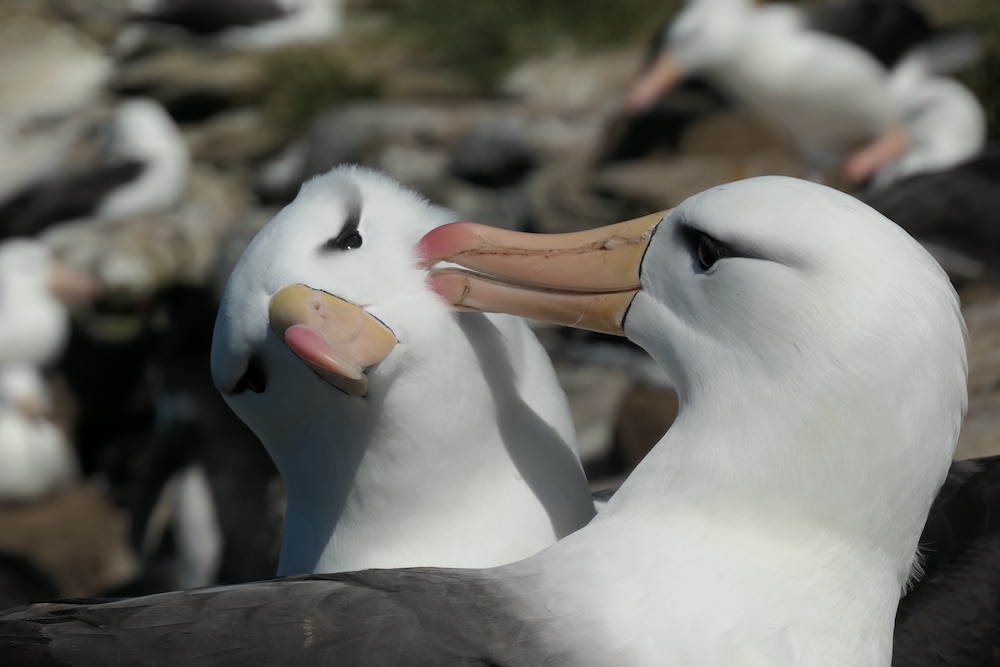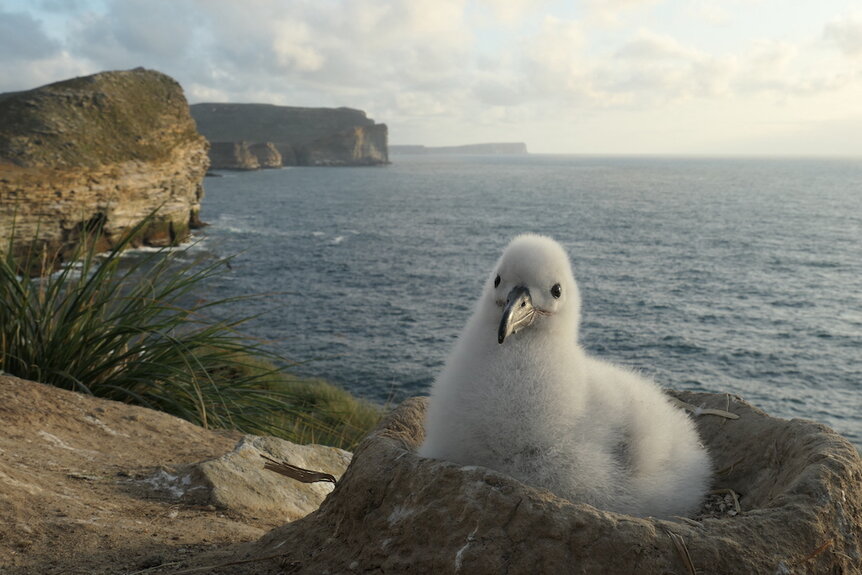Create a free profile to get unlimited access to exclusive videos, sweepstakes, and more!
Climate change is causing albatross divorce rates to heat up
They're flocking to divorce court.

Birds of a feather stay together for life, at least most of the time. Approximately 90% of bird species are socially monogamous and this is definitely true of the black-browned albatross. Incidents of divorce among albatross are low enough that bird divorce lawyers would struggle to make a living, but that’s all changing as a consequence of climate change.
According to a new paper by Francesco Ventura from the Department of Animal Biology at the University of Lisbon, and colleagues, rising temperatures are playing a direct role in reducing reproductive success and increasing divorce rates. Their findings were published in the Proceedings of the Royal Society Biological Sciences.
Scientists have been monitoring albatross populations on New Island in the Falklands continuously for nearly 20 years. The population there is moderately robust, with approximately 500 nests housing mated pairs of birds. Black-browned albatross are a long-lived species, regularly living for 60 years or longer.
“Last year, there was a breeding female in Hawaii that was 80-years-old and successfully reproducing,” Ventura told SYFY WIRE. “They are extremely long-lived and form long-term bonds with a partner.”
Those long-term relationships make evolutionary sense for a number of reasons. First, they have a high rate of survival from year to year, meaning that one mate who returns to the breeding ground has good reason to believe their partner will also return. Second, mated pairs develop coordination in their parenting strategy which allows them to be more competent parents when raising chicks.
Black-browned albatross are largely marine animals, returning to land only to breed between late-September and April when the chicks fledge and take to the waters. The rest of the time they are on the open ocean searching for food and living their secret lives. Because of their life cycle, they are notoriously difficult to study.
“Until the ‘90s, we had pretty much no idea of where they went,” Ventura said. “It’s difficult to truly understand the distribution and abundance of prey and if they have enough food. So, we need proxies, variables that are likely to reflect the processes going on at the ecosystem level. In general, sea surface temperature is a reliable proxy for the availability of food.”
Overall, colder sea surface temperatures are correlated to higher levels of nutrients available in the water. The inverse is also true. As temperatures rise due to anthropogenic climate change, resources become scarce and the economics of survival trickle down.
Because individual birds maintain relationships with the same mates year over year, and because they are generally loyal to the same nesting site, researchers were able to easily quantify which birds were breaking up in search of new mates, by way of identification bands. They defined divorce as any incident where both members of a pair survived to the breeding season but one or both of them chose new partners. Although, it was usually the females who instigated the split.
“The idea is divorce happens for a reason in birds. It’s generally thought to be an adaptive strategy mainly triggered by the female, which serves to choose a better mate,” Ventura said.
When albatross couples split, it’s usually the female who ends up better off. They have an easier time finding new mates, while males often struggle in that regard. Moreover, moving on to a new mate often results in improved reproductive success, making the strategy good for the species even if it’s sad for the individual.
Scientists found that as average temperatures rise, so too does the overall incidence of divorce irrespective of other factors. That said, reproductive failure was a good predictor of divorce in upcoming years. Specifically, failure early on — failure of an egg to hatch at all — as opposed to between hatching and fledging. These early failures are indicative of some incompatibility between the two individuals, it might also indicate sterility.
“It’s not a strict rule,” Ventura said. “If a pair fails, they don’t automatically divorce the following year. But they are five times more likely to divorce than a pair that successfully reproduced.”
While the albatross population on New Island is increasing, it is a special case. Every other population in the world is in decline and the reproductive and environmental impacts of climate change aren’t helping matters.
“Seabird populations worldwide are crashing. If you imagine that the environment has a direct influence on the probability of these pairs staying together, then you can see that this might introduce a disruption in the normal breeding process of these already threatened populations.”
If the fracturing of bird families isn’t enough to motivate us to get a handle on global climate change, what is?



























